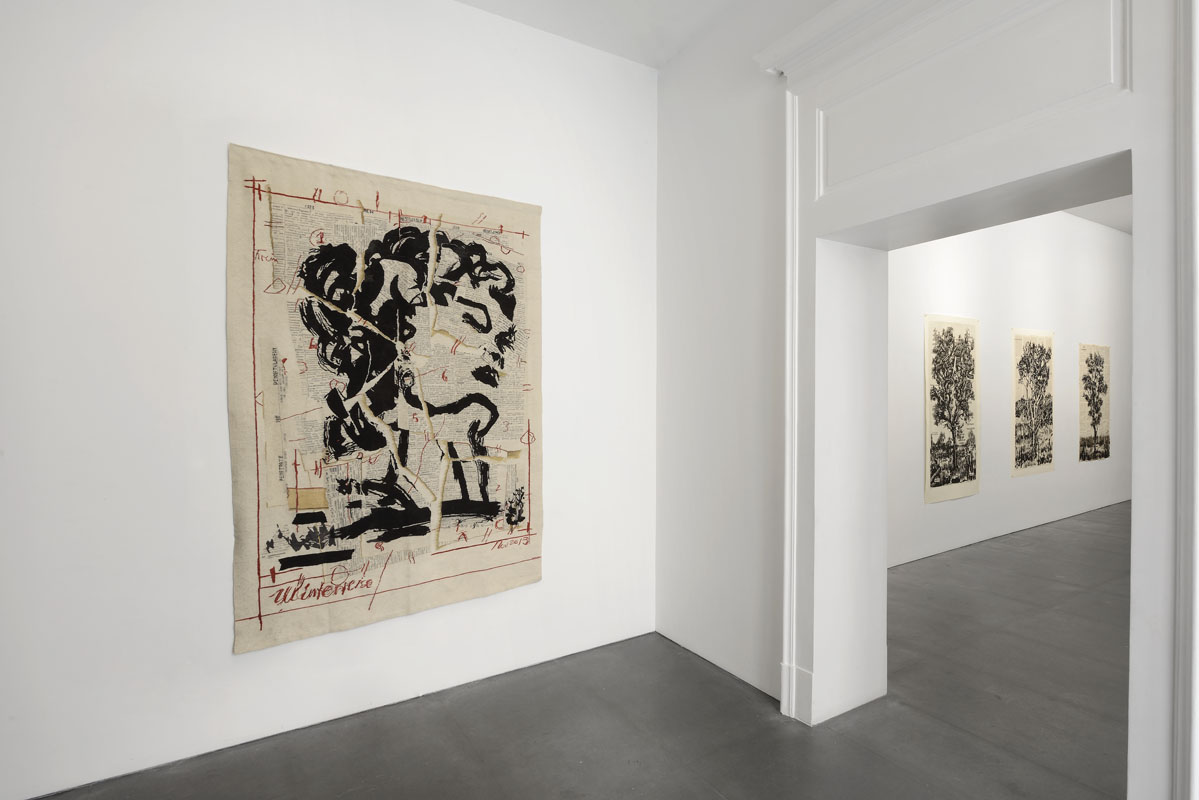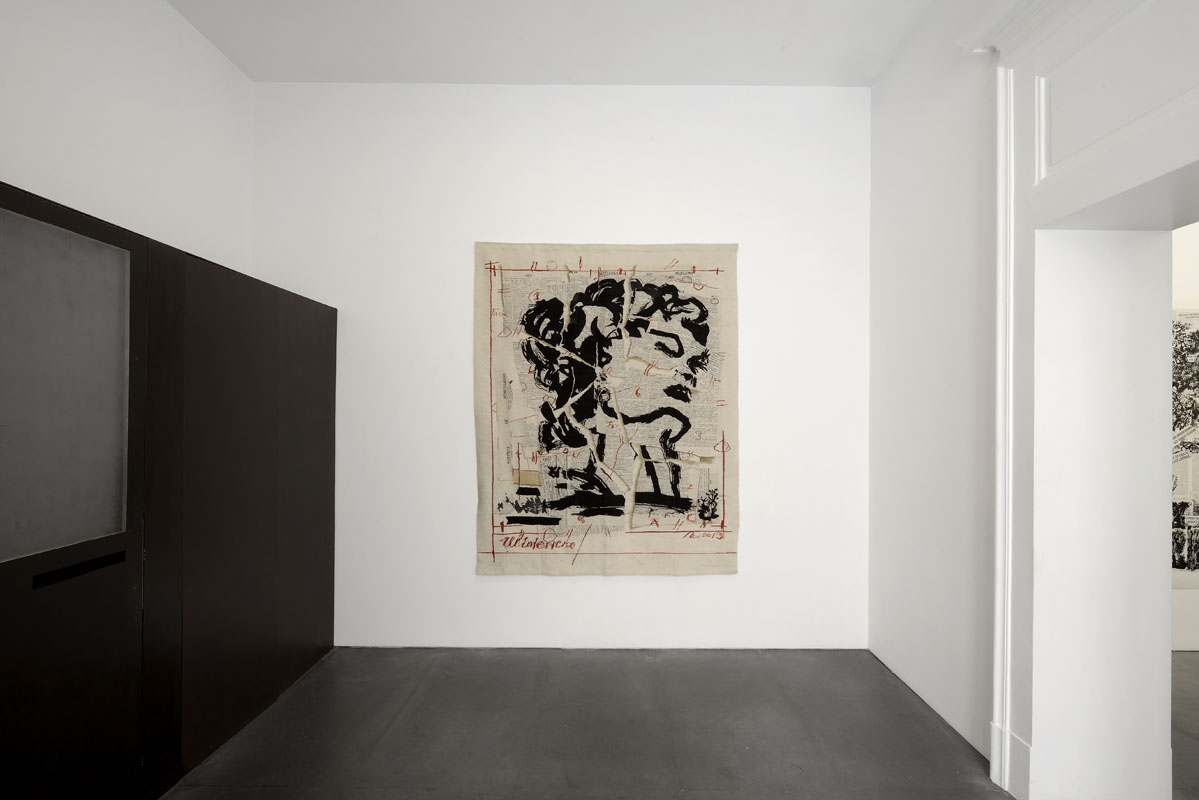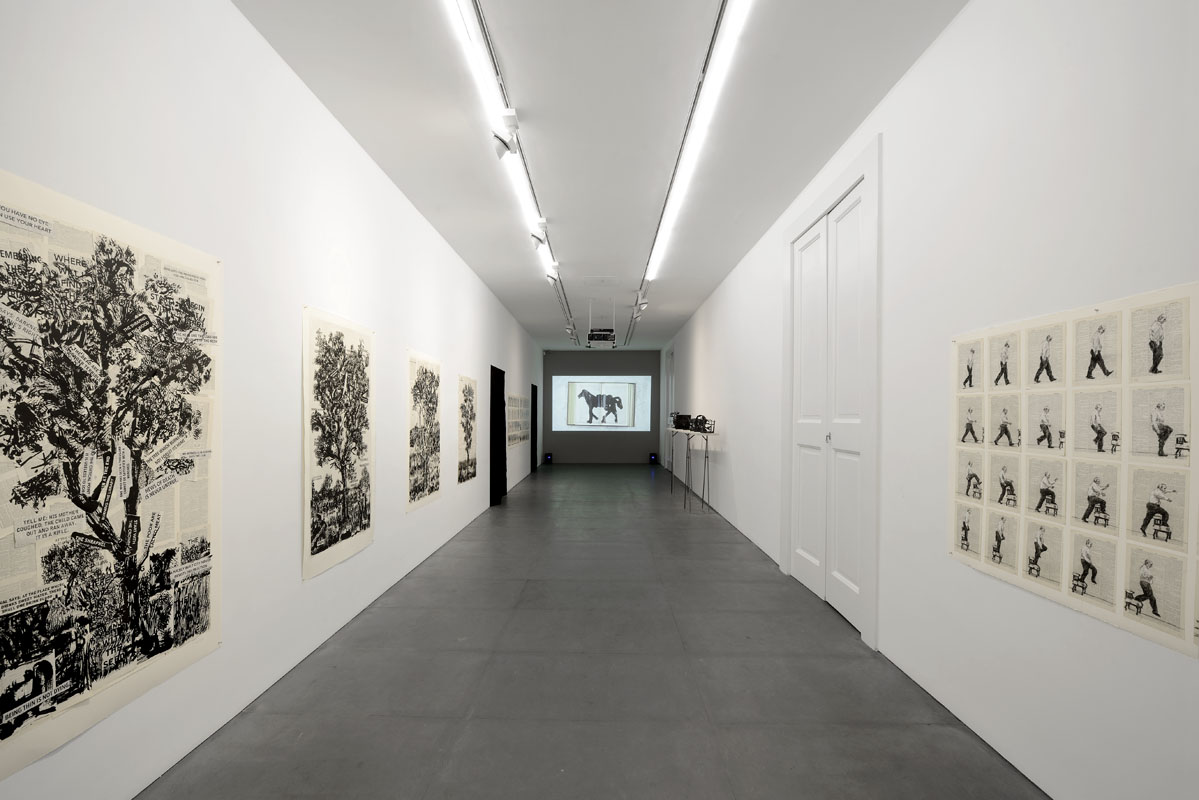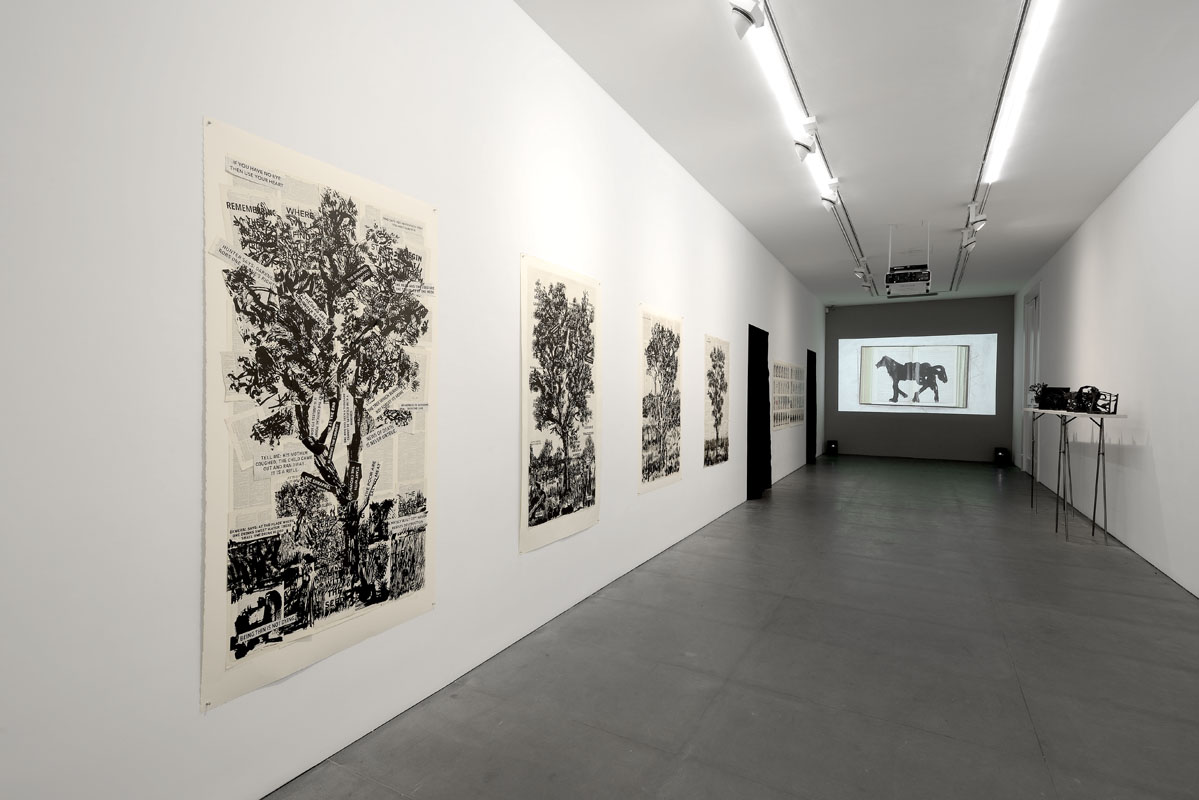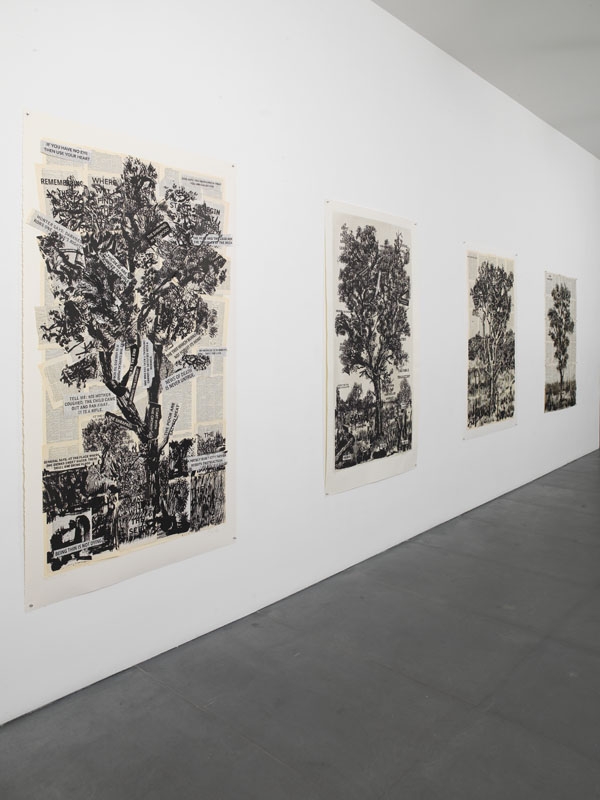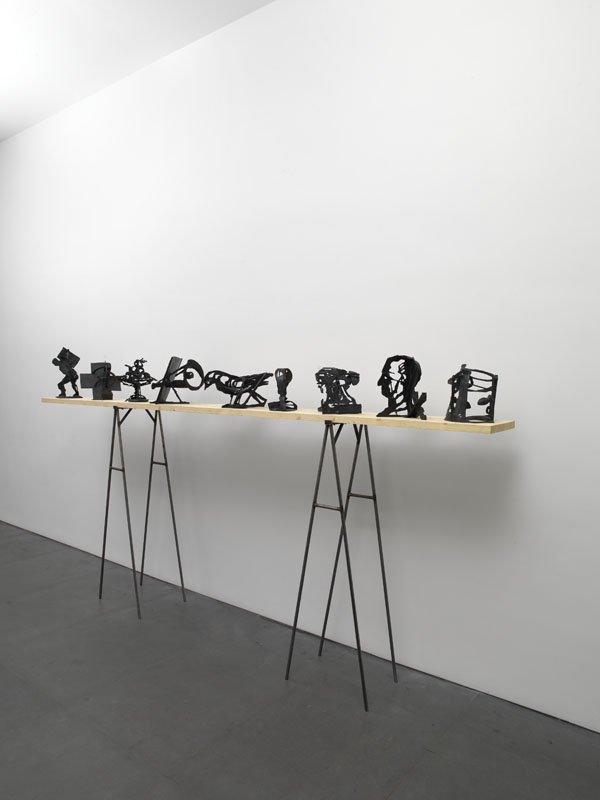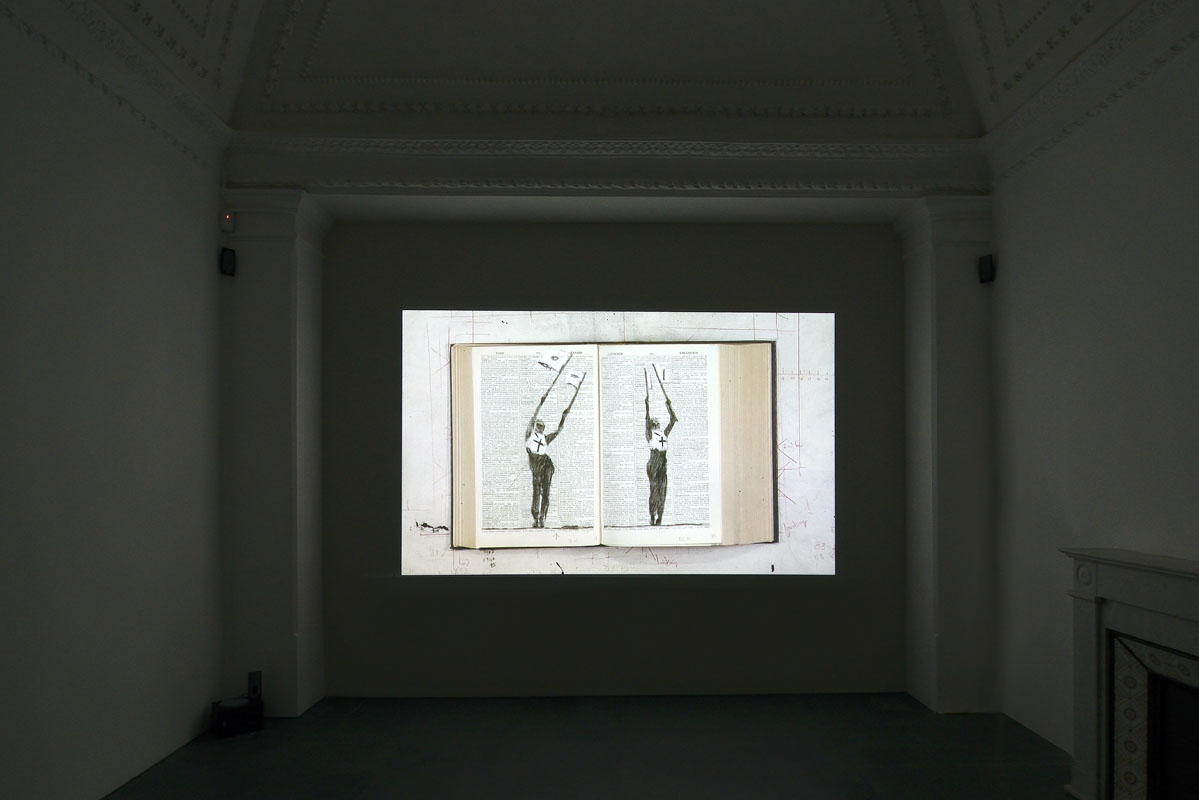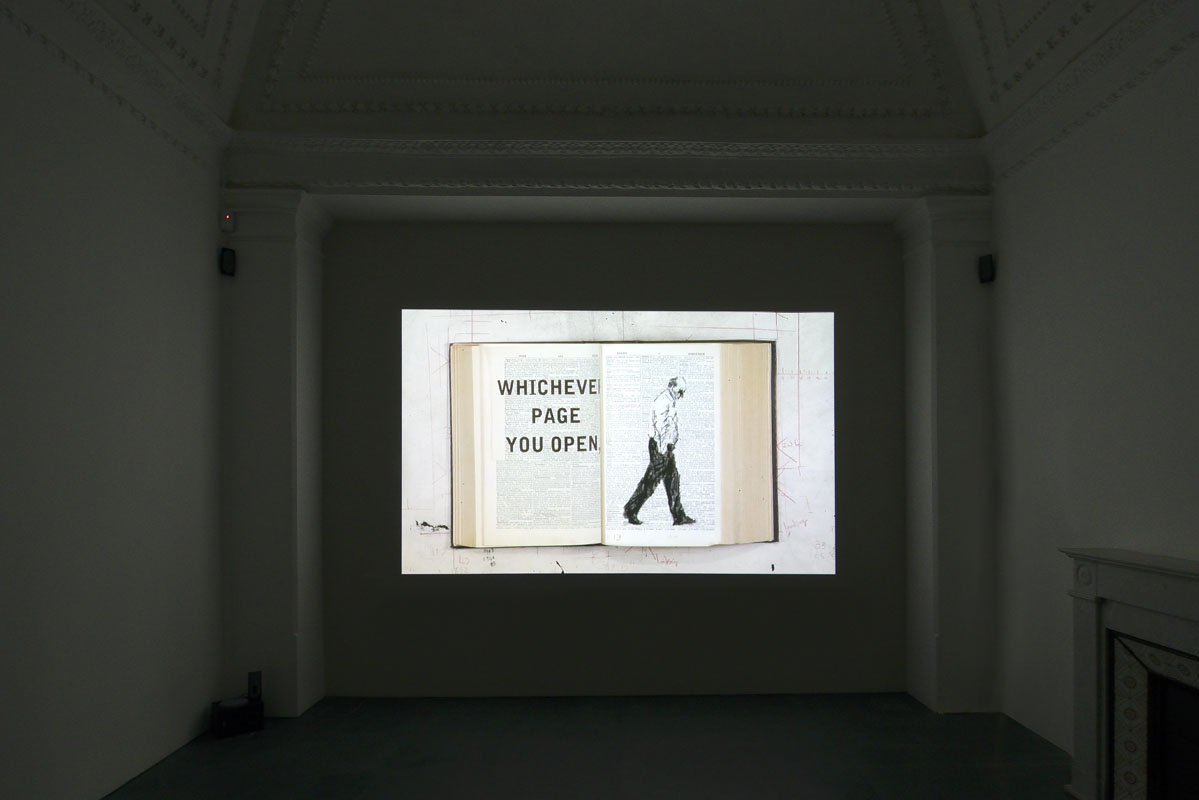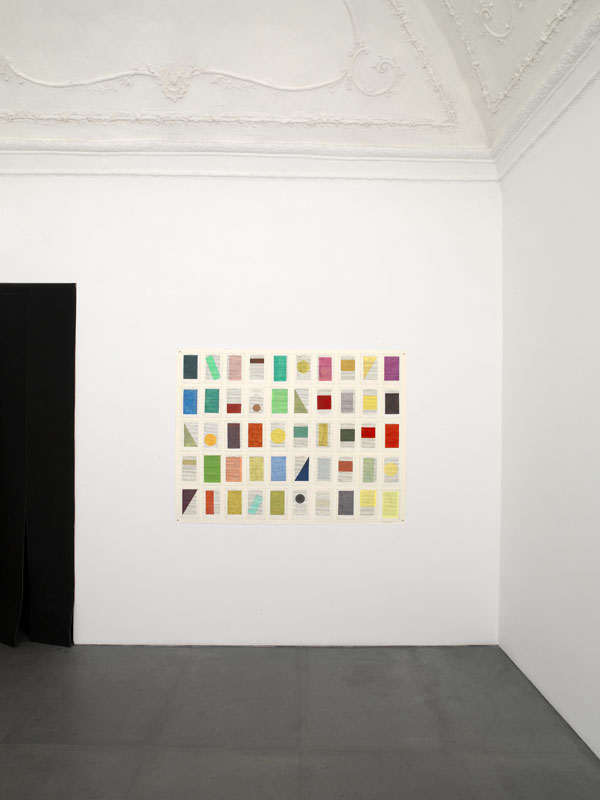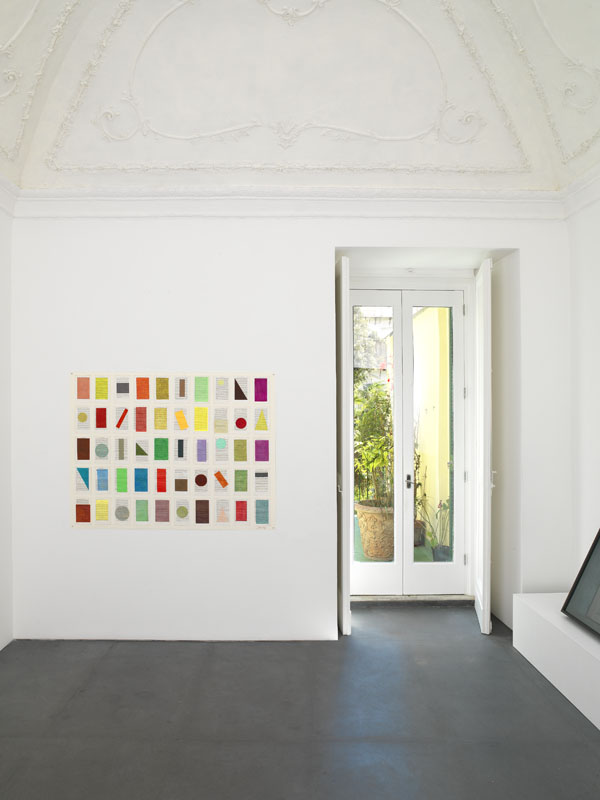There are many underlying causes that bring about William Kentridge’s art. He himself is disinclined to let his work be classified in any strict manner, and in any case, its kaleidoscopic nature would make this pointless. This is clear to see in this exhibition, which includes an extensive and varied body of works made between 2012 and 2014.
Both in the three flip-book films, one of which, NO, IT IS, consists of a triple screen projection, and in his linocuts and drawings made with a generously flowing, expansive use of India ink made from carbon black, Kentridge works on pages from encyclopedic dictionaries, such as the Oxford Dictionary, the Technology Dictionary, and the Britannica World Language Dictionary. These unusual supports are not neutral surfaces but rather palimpsests from which his “second-hand readings” emerge as images and words chase each other across the ordered sequences of the entries.
So, while reinventing one of the oldest forms of animation, Kentridge also creates a space from which to observe the contradictions of reality and its discontinuities. DISINTER AND RECONFIGURE, SHOWING AND HIDING and SHOWING AND VANISHING are but some of the many actions that emerge from huge, luxuriant trees. Many of the objects (including a megaphone, a typewriter, and a coffee pot) that come out from the pages find a material echo [“a mistranslation”] in Rebus of 2013, a group of nine bronze sculptures lined up on a wooden plank like words on a line. But while the enigma is literally a form of expression through objects, in Kentridge’s view these same things - which highlight the ambiguities and uncertainties of the real world - have no given, immutable meaning. Rather, they become new objects when the viewpoint from which they are observed changes. Kentridge’s art thus forms an uncertain “grammar of the world”, reminding us that aspiring to a single, all-embracing vision is quite simply an illusion.
Mostra personale
William Kentridge

Photo Gallery
L'artista
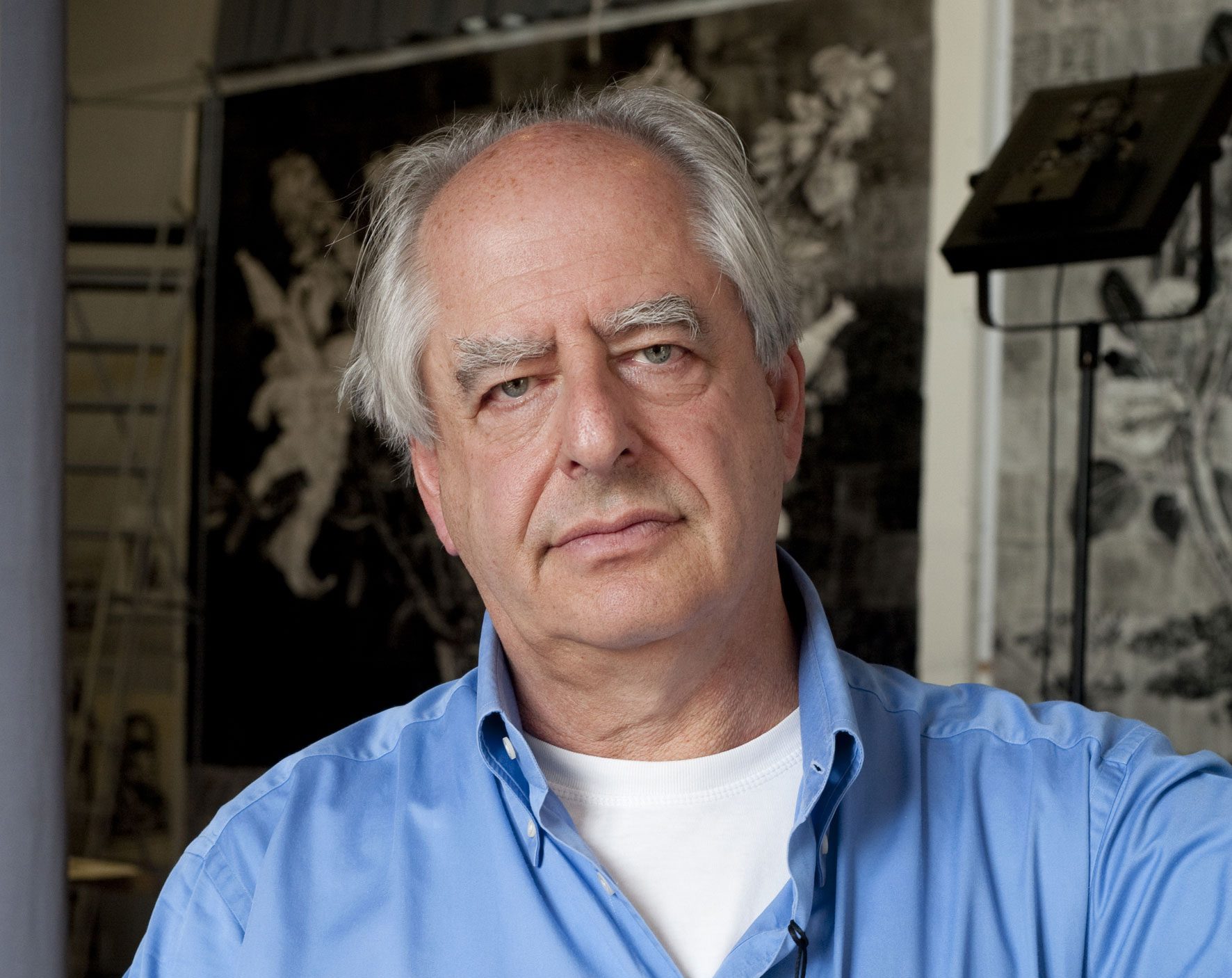
William Kentridge, born in 1955 in Johannesburg, South Africa, where he lives and works, is internationally renowned for his drawings, films, opera and theater productions. His multidisciplinary approach brings together drawing, writing, film, performance, music, theater, and collaborative practices to create artworks deeply rooted in politics, science, literature, and history,
